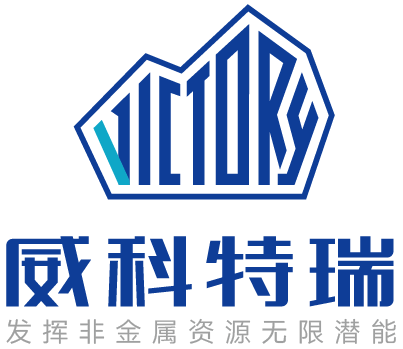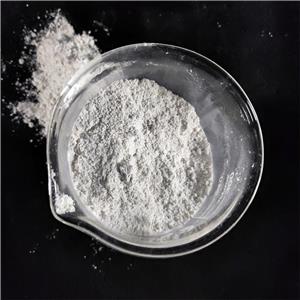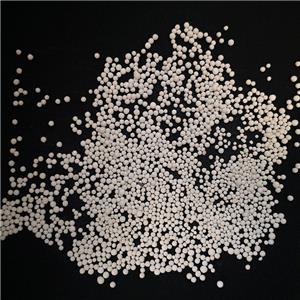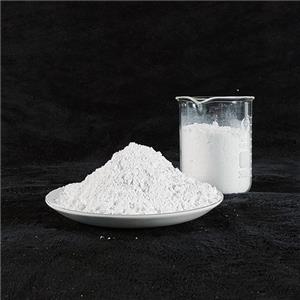Ten strategic applications of kaolin
Kaolin is a natural clay mineral with a typical 1:1 layered silicate crystal structure.Because of its abundant reserves, low price and environmental friendliness, it has been widely used in hundreds of industries such as ceramic industry, paper industry, refractory material and cement industry, petrochemical industry, medicine and textile industry.With the development of science and technology and the progress of national society, the research on kaolin is more in-depth.In the future, kaolin will be used as a kind of strategic nonmetallic mineral and have a better application prospect in more fields.
Heavy metal wastewater treatment
The layered structure of kaolin makes it possess excellent adsorption capacity. After functional modification, the natural kaolin material can be transformed into adsorbent to solve problems such as heavy metals, organic pollutants and suspended matter in water body.With coupling agent, crosslinking agent can make the modified chitosan wrapped on the surface of kaolin material, and MAGIC - the MRT Ⅱ class adsorbent of heavy metals.
Air pollution treatment
Mercury is a global type of air pollutant, and its main pollutions are direct emission into the atmosphere.By using CVAFS technique to analyze the adsorbability of various clay mineral materials with ultraviolet light, it is found that kaolin is very suitable for reducing the content of mercury pollutants in the atmosphere.
Organic sewage treatment
The alkaline - modified kaolin (AMK) and phosphate - modified kaolin (PMK) were obtained by hydrothermal modification of kaolin with sodium hydroxide and disodium hydrogen phosphate.After application, it was found that the modified kaolin material could effectively adsorb MB (methylene blue) and other organic pollutants, and the optimal adsorption capacity was 476.19 mg/g and 434.78 mg/g.
Electrochemical wastewater treatment
In recent years, it has been found that natural kaolinite can be used to solve the problem of non-neutral sewage treatment because of its good stability.Traditional electrode materials are susceptible to corrosion under non-neutral conditions, while most industrial wastewater is not neutral.Therefore, the corrosion of electrode materials in the process of treating wastewater by electrolytic principle limits the treatment effect to some extent.Based on this, Fe-Cu/ kaolin particle electrode has been successfully prepared. Its performance is better than that of original kaolin particle electrode and activated carbon particle electrode, and the expected rhodanine B removal effect can be achieved under neutral or even alkaline conditions.
Solar energy storage materials
A new kaolin/sodium stearate phase change heat storage material was prepared from kaolin and sodium stearate.Compared with the same type of phase-change heat storage materials, the latent heat of melting and condensation of the phase-change heat storage materials are as high as 109.25 J/g and 109.01J/g, respectively.
Phase change heat storage materials for buildings
The intercalation modified coal measure kaolin interlayer with binary organic eutectic can be used to control the indoor temperature change.Based on this characteristic, binary organic/coal measure kaolin composite phase change energy storage materials can be widely used in the construction industry to achieve the purpose of energy saving.Three kaolin based composite phase change materials (KB-CPCMS) prepared by vacuum impregnation method have good functions of heat storage, ventilation and air conditioning, which are suitable for heating, ventilation and air conditioning of building envelope.
New Materials Field
Molecular sieve has the advantages of adsorption separation, rapid exchange and catalysis, can be widely used in metallurgy, petroleum, chemical industry, medicine and daily chemical industry and other fields.Kaolin can be used as a good raw material for the preparation of molecular sieves because of its abundant reserves, low price and high content of Al and Si.Therefore, kaolin can be used to synthesize 4A molecular sieve, and then form new materials.
Hemostatic materials
Based on the bleeding control property of ocher as a natural hemostatic agent, a new type of iron oxide/kaolin nano-clay composite material was successfully synthesized. The morphology of the oxide has a significant effect on the hemostatic effect.
Drug carrier
Kaolin can be used as a carrier for drug loading and release.Using methanol intercalated kaolin as the carrier, compared with the unmodified kaolin, after loading small molecule chemotherapy drug 5-fluorouracil, it was found that the loading capacity of the modified kaolin was up to 55.4%, which was 147.3% higher than that of the modified kaolin.This is because methoxyl grafting between layers of kaolin expands the space between layers of kaolin, which provides new active sites for drug molecules and promotes drug entry into the layers.
Antibacterial material
Compared with montmorillonite, the ion exchange capacity of kaolinite is weak, so the antimicrobial agent is easier to release, and has better bactericidal effect.By measuring the adsorption capacity of CPB, it was found that CPB-kaolinite had antibacterial activity when [CPB] exceeded its CMC value.When the CPB is loaded on kaolinite, the overall charge changes from positive to negative, thus having the ability to adsorb bacteria and eventually kill bacteria.Therefore, kaolin is a good bactericidal application, and in the development of organic clay as an antimicrobial agent, the amount of surfactant fixed on the clay must exceed the CMC value.
To sum up, among the seven strategic emerging industries proposed in the "13th Five-Year" National Strategic Emerging Industry Development Plan, kaolin has a very broad application prospect in energy conservation, environmental protection, biological industry, new materials and other aspects.




